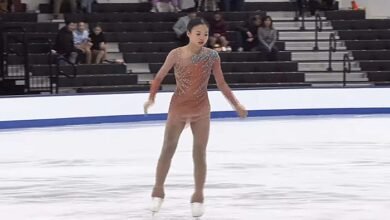The Rise of “Aking in Game”: A Comprehensive Guide

The world of gaming is constantly evolving, with new trends and technologies emerging every day. One of the terms gaining popularity in the gaming community is “Aking in Game.” While it may sound unfamiliar to some, this concept has taken on a significant role within the gaming world, especially among players who want to improve their skills and enjoy a more engaging experience. In this blog post, we will explore the concept of “Aking in Game,” its meaning, how it influences gaming culture, and how it has shaped the future of competitive and casual gaming.
What Does “Aking in Game” Mean?
The term “aking in Game” refers to the experience of excelling or achieving success in a particular game, whether it’s through impressive gameplay, strategic mastery, or high skill levels. While the phrase might not have been widely recognized in the past, it has gained momentum as gaming has become a more competitive and immersive experience. The term is typically used to describe someone who has mastered the game, performed exceptionally well in a challenging scenario, or reached a level of proficiency that sets them apart from others.
“Aking in Game” also ties into the concept of “gaming prowess” – a combination of expertise, decision-making, reaction times, and strategic thinking. Whether you’re playing a role-playing game (RPG), first-person shooter (FPS), or a battle royale, the phrase encapsulates the ability to perform in-game tasks at an impressive level, contributing to the overall gaming experience.
The Role of “Aking in Game” in Competitive Gaming
In the competitive gaming sphere, “Aking in Game” has a special significance. In eSports tournaments and online competitions, players are constantly striving to be the best in their chosen games. As the gaming world continues to grow, more and more players are looking for ways to improve their skills and stand out in competitive environments. “Aking in Game” becomes a measure of success and a symbol of hard work, practice, and dedication.
Achieving “Aking in Game” status is not easy. It requires players to understand the mechanics of the game deeply, work on their strategies, and hone their reflexes. For eSports athletes, this translates to countless hours of training, analyzing gameplay, and optimizing performance. Whether it’s a game like League of Legends, Fortnite, or Dota 2, the competition is fierce, and only those who excel in their craft can claim the title of being the best.
The Impact of “Aking in Game” on Casual Gaming
While “Aking in Game” is often associated with competitive gaming, it also has a significant impact on casual gaming. Many casual gamers may not engage in eSports tournaments or online competitions, but the desire to “Ace in Game” is universal. Casual players also strive for mastery in their chosen games, whether it’s reaching the highest level, completing all the achievements, or simply becoming proficient at the game.
For casual gamers, “Aking in Game” is often about personal satisfaction. It might involve completing difficult quests, unlocking hidden secrets, or simply outperforming friends in multiplayer scenarios. As gaming has become more accessible through mobile phones and home consoles, the motivation to achieve success in-game has reached a broader audience. Many games today provide players with goals and rewards that encourage this drive, from leveling up in role-playing games to unlocking skins and cosmetic items in multiplayer games.
How “Aking in Game” Drives Innovation in Game Design
As the gaming community continues to embrace the challenge of “Aking in Game,” developers have been forced to raise the bar in terms of game design and mechanics. Games are becoming increasingly complex, and developers are adding more layers of difficulty and strategy to cater to players who want to push their limits. The term “Aking in Game” has, in essence, helped shape the future of game design by encouraging developers to create more intricate and challenging experiences.
Games that focus on “Aking in Game” offer players multiple layers of gameplay, often combining tactical elements, skill-based mechanics, and decision-making. Games like Dark Souls, for example, are famous for their high difficulty, where players are expected to fail numerous times before succeeding. This challenge appeals to the desire to “Ace in Game,” pushing players to master every aspect of the game. Similarly, multiplayer games like Overwatch or Valorant encourage players to “Ace in Game” by constantly refining their teamwork, strategy, and individual skills.
As developers create more challenging and rewarding experiences, the gaming community, in turn, becomes more engaged and motivated. Players no longer seek out games that are simply easy to play but are increasingly searching for games that push them to their limits. This evolution has led to the creation of games that are not only entertaining but also intellectually stimulating and rewarding.
The Social Aspect of “Aking in Game”
While “Aking in Game” is often seen as an individual accomplishment, it has a significant social component as well. Multiplayer games, where players compete with or against each other, rely on teamwork, communication, and coordination. Achieving success in these games can often be a team effort, with players working together to reach a common goal. Whether it’s coordinating attacks in a battle royale game or executing complex strategies in a team-based shooter, “Aking in Game” is often the result of collaboration and cooperation.
The social aspect of “Aking in Game” is also seen in the broader gaming culture. Many players share their experiences, strategies, and accomplishments through social media, gaming forums, and live streaming platforms like Twitch. Players who achieve exceptional results often gain recognition from the community, whether it’s through achieving high rankings, posting walkthroughs, or hosting tutorials. In this way, “Aking in Game” becomes more than just personal success; it also becomes a shared experience that helps build relationships within the gaming community.
Furthermore, the desire to “Ace in Game” often drives players to join gaming teams, participate in tournaments, and compete for recognition and rewards. As competitive gaming grows, so does the need for social collaboration, with players learning from each other, forming alliances, and competing in various leagues or competitions.
The Psychology Behind “Aking in Game”
The pursuit of “aking in game” is deeply tied to the psychology of motivation and achievement. For many gamers, mastering a game provides a sense of accomplishment, boosts self-esteem, and offers a tangible way to measure progress. The desire to excel in games taps into the concept of intrinsic motivation—the idea that people are driven by internal rewards, such as personal satisfaction and mastery, rather than external rewards like prizes or recognition.
The sense of achievement in “Aking in Game” can also trigger the release of dopamine, the neurotransmitter associated with pleasure and reward. This creates a feedback loop where the more a player succeeds, the more they are motivated to continue playing and improving. This is why games with difficult levels, competitive mechanics, and a rewarding progression system tend to attract players who are determined to “Ace in Game.”
Moreover, the thrill of overcoming challenges and achieving mastery can also serve as a stress reliever for some players. Many gamers turn to games as an escape from real-life pressures, and “Aking in Game” becomes a way to channel their focus and energy into something productive and rewarding.
The Future of “Aking in Game”
Looking ahead, the concept of “Aking in Game” will continue to evolve with the advancement of gaming technologies. Virtual reality (VR) and augmented reality (AR) are becoming more integrated into the gaming experience, providing new challenges and opportunities for players to showcase their skills. With VR, players can become more immersed in their games, interacting with environments in ways that were previously impossible. This opens the door for new ways to achieve success in games, as players will have to master new mechanics and adapt to these evolving technologies.
Additionally, as games continue to become more complex, the concept of “Aking in Game” will likely become more nuanced. Players will need to possess a broader set of skills, ranging from strategic thinking and teamwork to problem-solving and technical knowledge. With the increasing use of AI in games, players may also find themselves competing against more intelligent opponents, pushing the boundaries of what it means to “Ace in Game.”
The future of “Aking in Game” is limitless, as gaming continues to grow and diversify. With new platforms, new genres, and new technologies emerging, the pursuit of excellence in games will remain a central theme in the gaming community.
Conclusion
In conclusion, “Aking in Game” represents more than just a concept—it’s a powerful driver of success, motivation, and achievement in the gaming world. Whether you’re a casual player looking to improve your skills, a competitive gamer striving for greatness, or a game developer crafting challenging experiences, the pursuit of excellence in games is central to the entire gaming experience. From mastering complex mechanics to collaborating with teammates, “Aking in Game” shapes the way we engage with games and provides a sense of accomplishment and community. As the gaming world continues to evolve, “Aking in Game” will remain an essential part of the journey.
FAQs
1. What does “Aking in Game” mean?
“Aking in Game” refers to excelling or achieving success in a game, whether it’s through mastery of game mechanics, high skill levels, or impressive achievements.
2. How does “Aking in Game” impact competitive gaming?
In competitive gaming, “Aking in Game” represents the highest level of achievement. It drives players to refine their strategies, improve their skills, and compete at the highest level in eSports tournaments.
3. Can casual gamers “Ace in Game”?
Absolutely! Casual gamers can also strive to “Ace in Game” by improving their skills, completing challenges, and mastering game mechanics, even if they aren’t involved in competitive play.
4. How does “Aking in Game” influence game design?
The desire to “Ace in Game” has led developers to create more challenging and rewarding games, encouraging deeper gameplay mechanics, strategic thinking, and immersive experiences.
5. What motivates players to strive for “Aking in Game”?
Players are motivated by a sense of achievement, the thrill of overcoming challenges, and the intrinsic rewards that come from mastering a game and achieving success.




